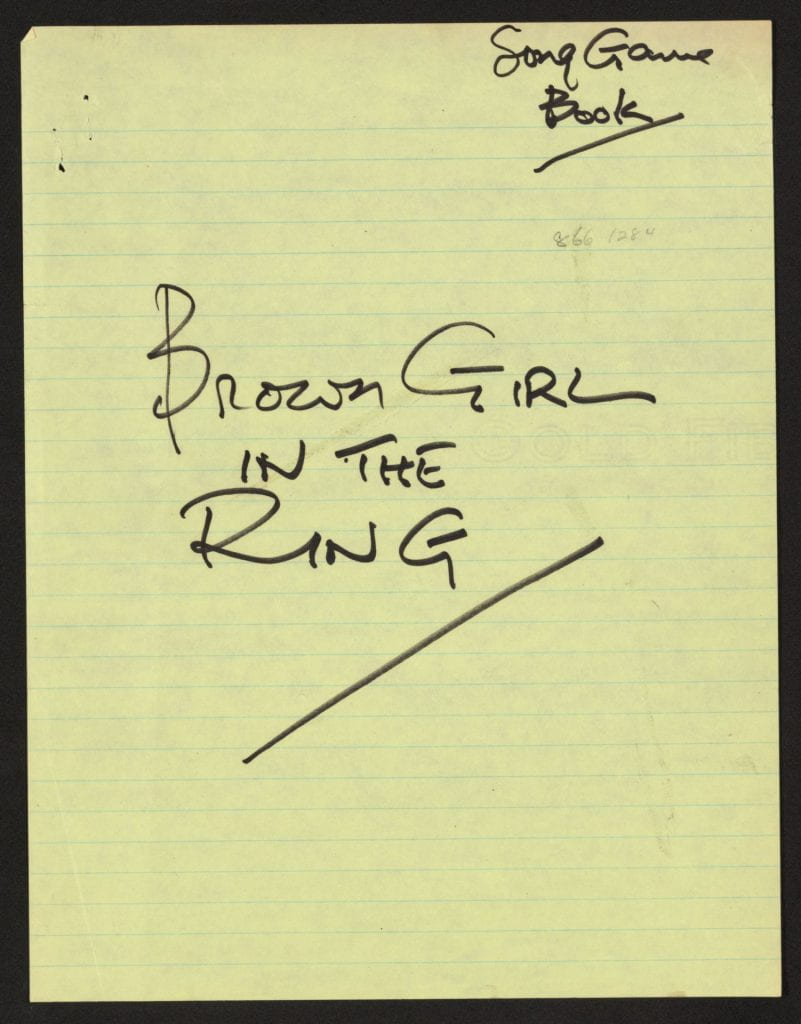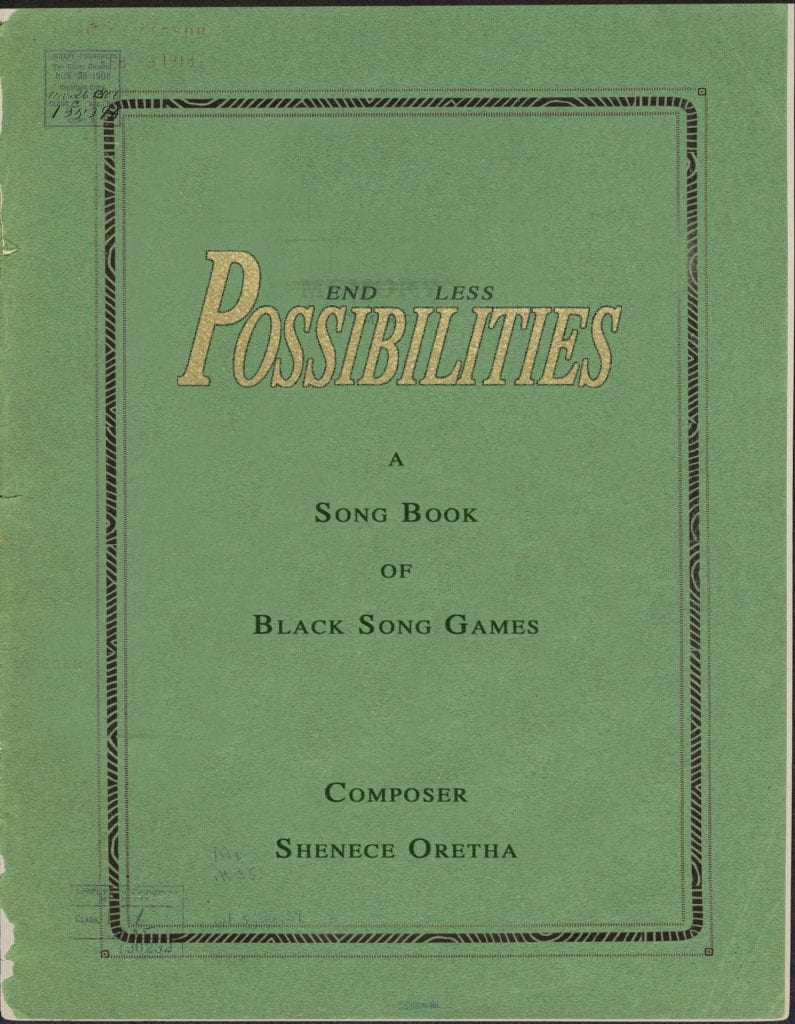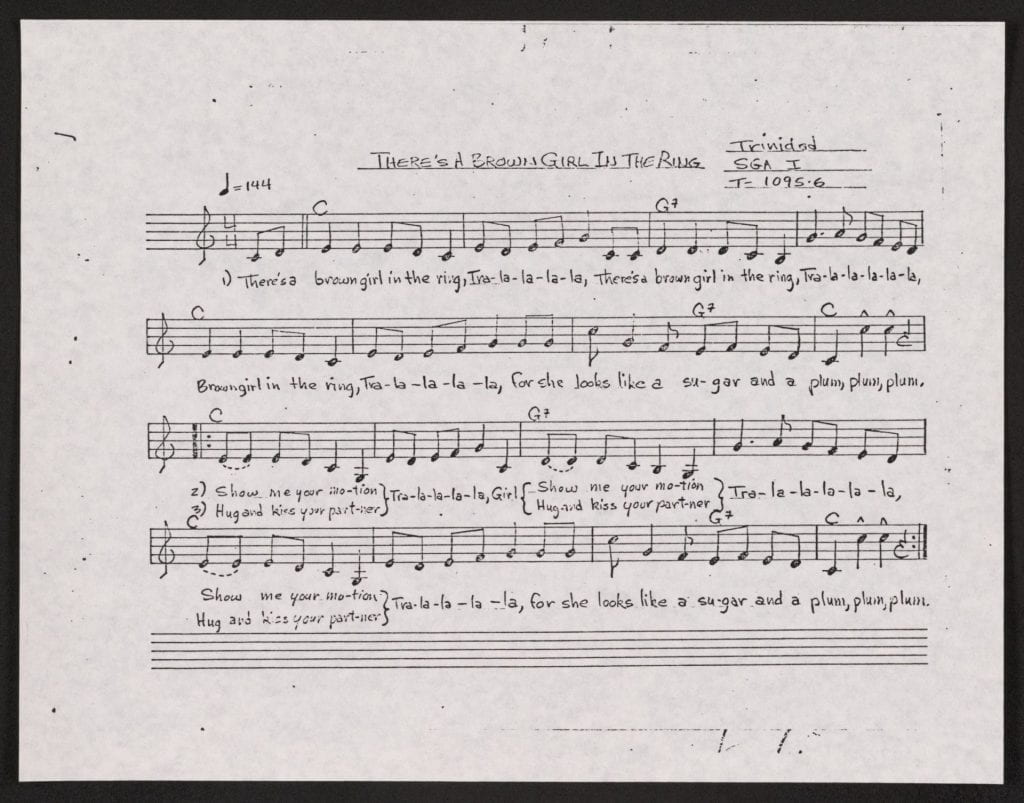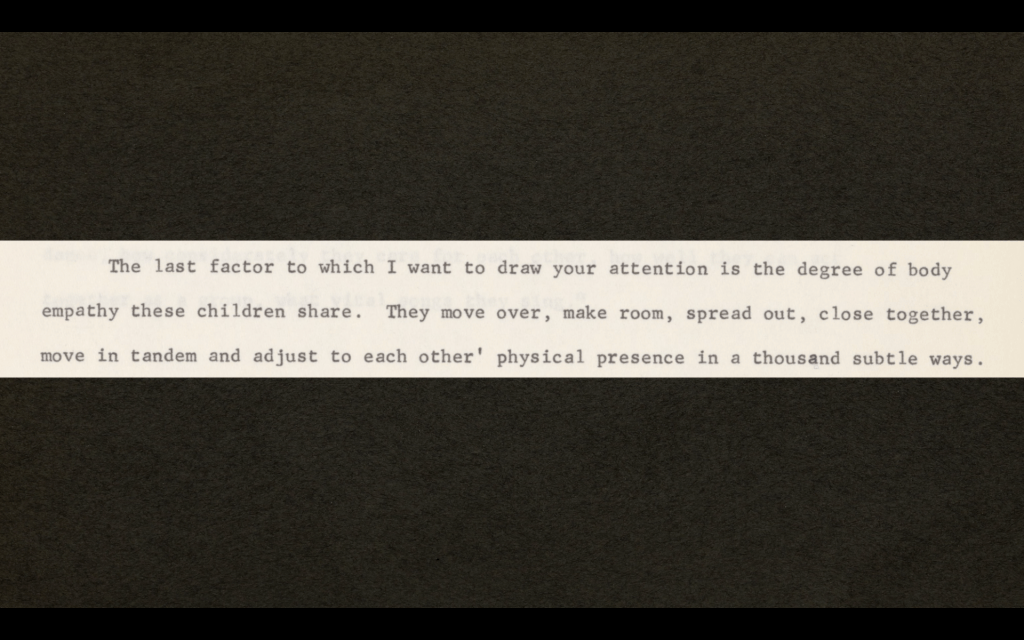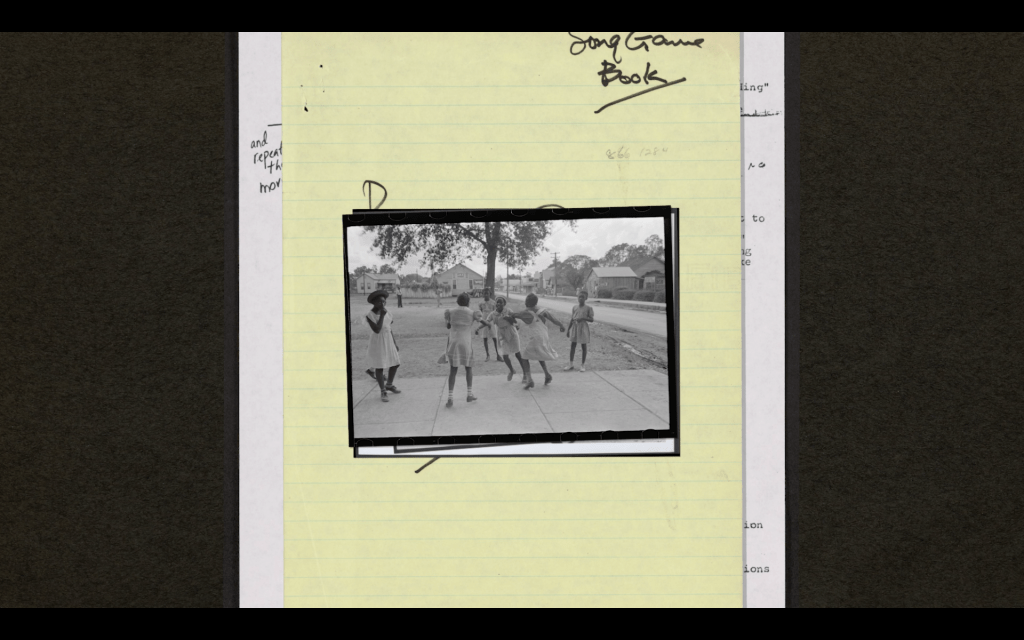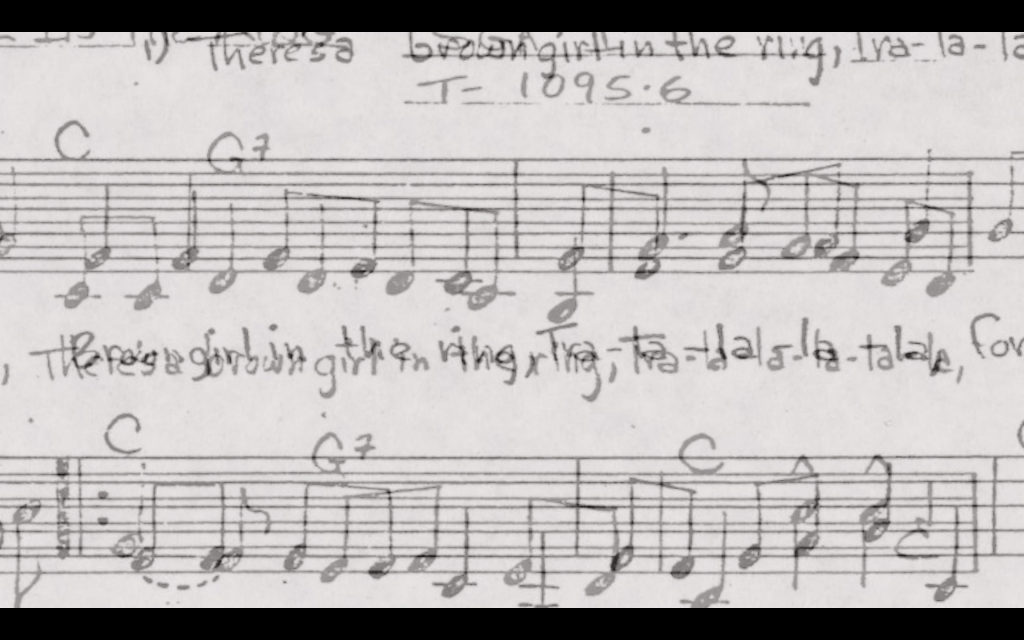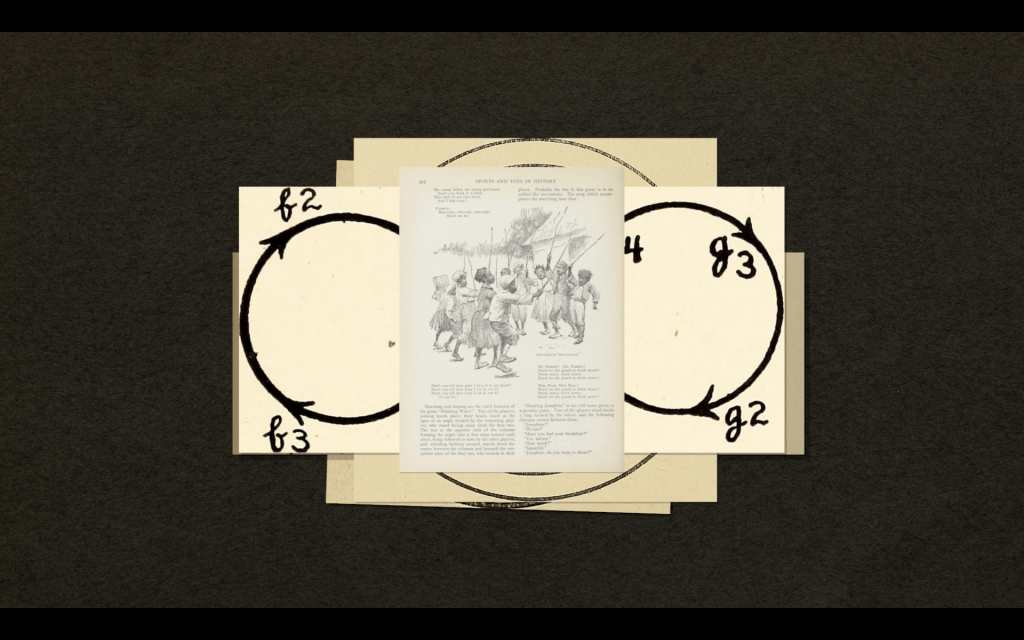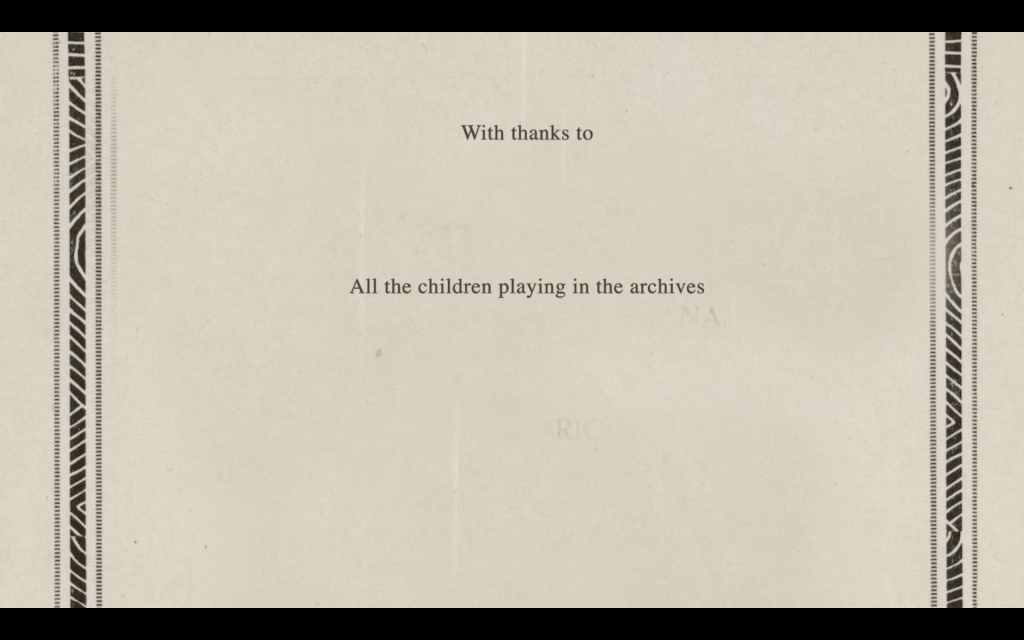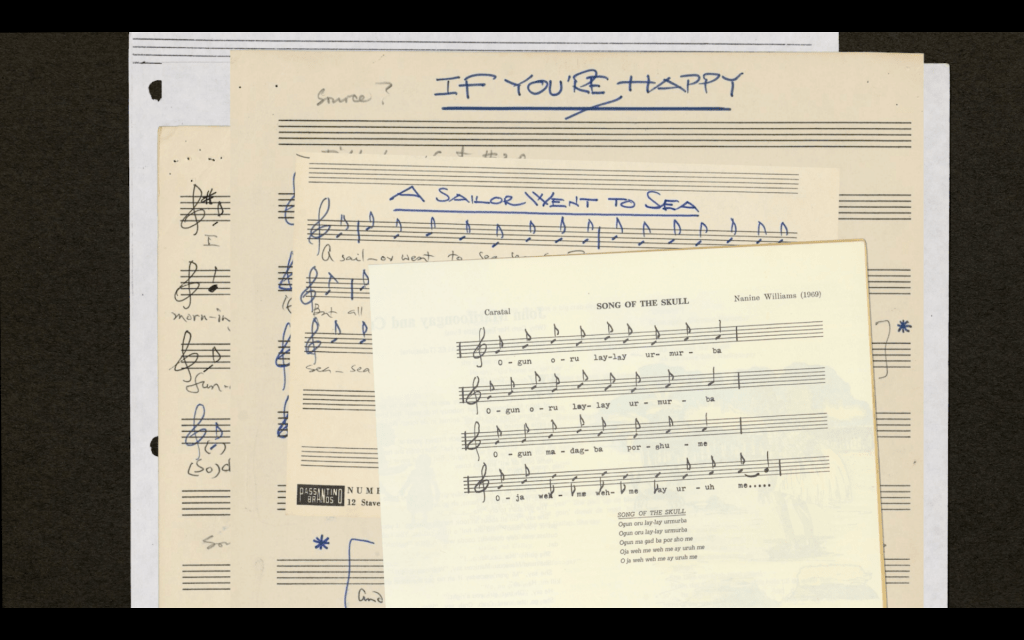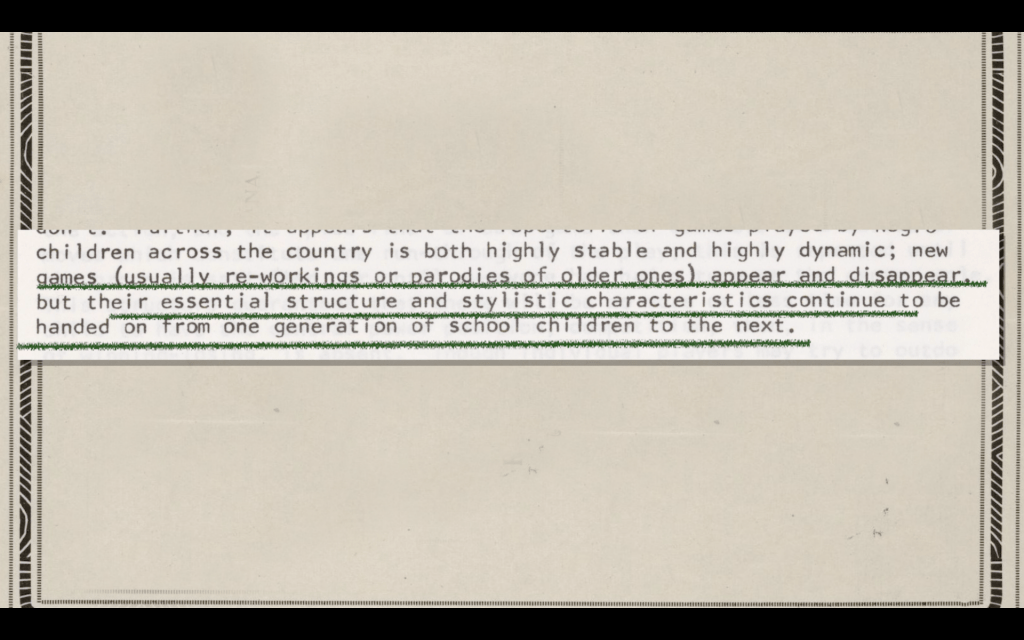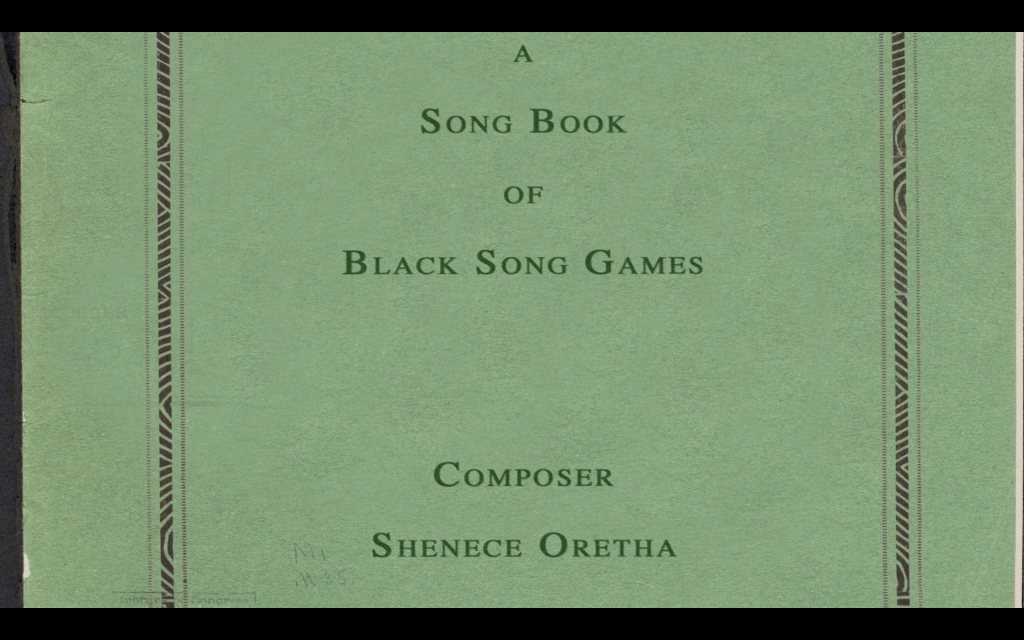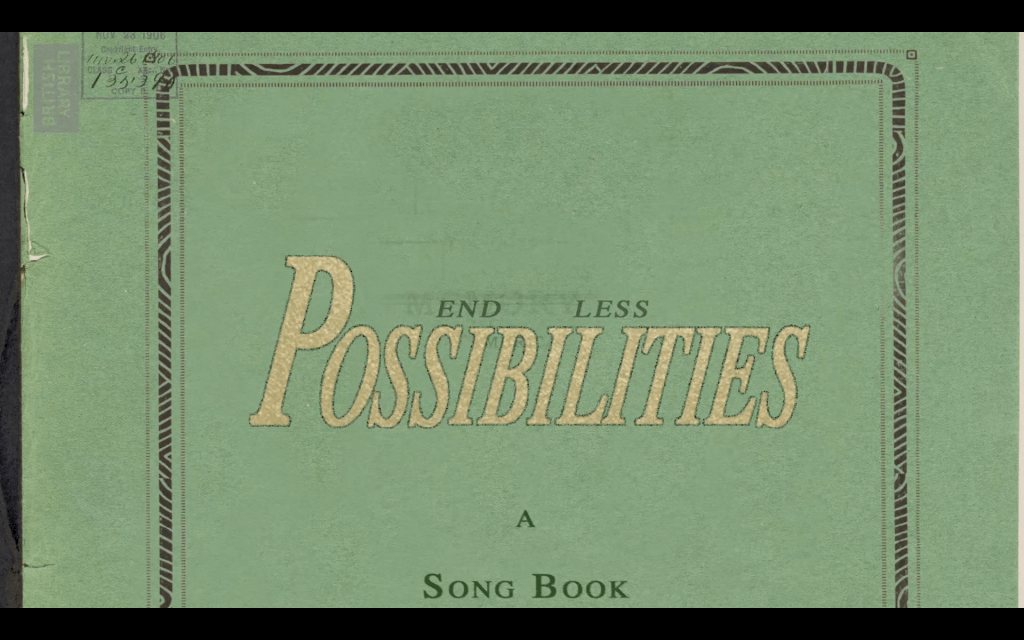SHENECE ORETHA
Possibilities
Shenece Oretha, Possibilities, 2021
For the visual score Possibilities, Shenece Oretha has listened to recordings from the digitised ‘Playtimes’ collection within the British Library’s Sound Archive, as well as from the ‘Dan Jones Collection of Children’s Games and Songs’.
Dan Jones is an artist and human rights campaigner who oversaw the collection of recordings that bears his name, including recordings of children’s games, songs and rhymes from across the globe – from Rwandan clapping games to Swahili chasing games. Inspired by both collections, Oretha places the relationship between play, music and possibility at the forefront. With a focus on the ring games, songs and drumming from the Black diaspora featured in the sound recordings, Possibilities celebrates play’s capacity to be a universal and embodied form of language and community. The visual score is an ode to the song game and the musicality of play. Noting a contradiction between the freedom of play and the history of the “archival” – percussive sound bridges the archived recordings integrated in the work; continuing their rhythm, excitement and playfulness, with the improvisatory jazz drum and the drumroll, filled with anticipation.
Listening to the recordings of instructions, structures and rules alongside the footsteps in motion, polyphonic voices and the carefree laughter, you begin to hear the possibilities in play.
In describing her process and ideas, Oretha explains how through listening to the ‘Dan Jones Collection’, ‘you can hear a commonality across the recordings’ and that ‘it is surprising how much singing and musicality are features of play.’ She continues:
“We are able to draw a connection through the Black diaspora in the way ring games, song games and drumming feature among Black communities around the globe. Song games and their familiar sing-songing, rings, clapping and call and response are present throughout. The video draws on the figuration and gestures of play. The sounds from the archive and the music animate the imagery, and symbols such as feet, hands, legs and mouths, are put back in motion. Interspersed throughout are similar markings to those drawn on the floors of playgrounds and sports courts – these shapes and lines forming a visual score. The symbols express the movements of the sing-songing voice, the formations of feet and the actions of play, as well as the patterns, looping and repetition found in the song structures. The relationship between music player and game player, following the score or improvising, is at the heart of this study. Listening to the recordings of instructions, structures and rules alongside the footsteps in motion, polyphonic voices and the carefree laughter, you begin to hear the possibilities in play.”
Oretha has also created a unique large-scale image that is displayed on the London Arts Board situated on the corner of Peckham Road and Vestry Road, Camberwell, South East London, from 8th to 21st May, as a physical extension of Possibilities. This further sets the conditions for the archived sounds of play to be ‘opened back up to possibilities; different outcomes, directions, gestures, routes for those who encounter the work’, as Oretha suggests.
Shenece Oretha
Shenece Oretha is a London-based multidisciplinary artist who explores the voice and sound’s mobilising potential. Through installation, performance, print, sculpture, sound, workshops and text she amplifies and celebrates listening and sound as an embodied and collective practice. Her work is attentive to not just the music, but the musicality of her experiences of Black oral traditions, ceremony, spiritual practice and literature, combined with the intimate emotional, physical, relational and communal resonance they generate.
Oretha has exhibited and performed internationally. Recently, her work Called to Respond was shown at Cell Project Space, London (2020). Her first solo exhibition, ‘TESTING GROUNDS’, curated by Taylor Le Melle, was presented with Not/Nowhere at Cafe Oto, London (2019). Group exhibitions include ‘Cinders, Sinuous and Supple’, curated by Deborah Joyce Holman, Les Urbaines, Lausanne (2019); ‘PRAISE N PAY IT/ PULL UP, COME INTO THE RISE’, South London Gallery; and ‘BBZBLKBK: Alternative Grad Show’, Copeland (both 2018). Presentations of performance work include ‘Towards a black testimony’, curated by Languid Hands, Stroom Den Haag (2019); Wysing Polyphonic Festival, Wysing Art Centre, Bourn (2018); ‘Congregation’, ICA, London, (2017).
Endless Possibilities
A Song Book of Black Song Games
Composer – Shenece Oretha
[00:11] [Children counting] One, Two, Three, Four, Five, Six, Seven, Eight.
[00:21] ‘children’s singing games’
[Drumrolls and clapping begin and continue throughout]
‘Play Chants & Singing Games’
‘consider middle C the bottom of the soprano range for children… many children are sopranos.’
[00:40] ‘Rhythmic values are stressed much more than the melodic’
’My boyfriend gave me a box
A box, a box
My boyfriend gave me a box
Oh Susianna.
[00:50] [Children singing]
‘to present…European…and African elements have combined …
[00:59] ‘The structure is strikingly similar to many British nursery rhymes … 4/4 or 2/4 meter, the children are quite casually … trained musicians.’
[01:07] [Drumrolls, Children singing and clapping continue]
‘Games (usually re-working or parodies of older ones) appear and disappear, but their essential structure and stylistic characteristics continue to be handed on from one generation of school children to the next’
[01:16] [Children singing and drumming returns]
[Clap] ‘This is a truly ancient game’
[01:29] [Clap] ‘sheer survival of these games becomes even more impressive … hundreds of years old’
[01:35] [Clap] ‘The primary game form is the ring.’
[01:38] [Cymbals]
[01:48] [Children cheering and playing]
‘All action takes place inside the ring or between the parallel lines. Characteristically, there is a central figure who initiates the action, and the structure of each game consists of a series of moves which constitute one run-through of the play. This repetitive structure guarantees that there will be no more or less time for any child to have the central role. Competition, then in the sense of winning-losing, is completely absent. Though individual players may try to outdo each other in improvisational detail, there is no reward expressed in terms of the game action. However, though payers may improvise according to their own personal style, they may not alter the fundamental structure of the play. These are essentially ritualistic performances; as you will seem, when one child forgets the correct order the entire game breaks down.’
[02:04] [Children sing There’s A Brown Girl In The Ring with rhythmic clapping in the background]
[02:35] [Singular clapping with cymbals]
[Rhythmic snare and bass drum beats begin]
[02:52] [Clap] ‘The clapping game in which two children … added like a string of beads, … facing each other; or one child facing’
[Children singing and clapping]
[Clap] This clapping chant appears to … impact around 1964;… on both white and black playground. [Clap] The clapping patterns differ … [Clap] finger-snapping and slapping’
[03:15] [Children singing Rwanda clapping song begins]
[Drumming begins ]
[03:25] ‘Though the children clap, quite casually and without… their clapping style seems to stress’
[Close drumming begins]
[03:39] ‘Their hands are quite relaxed; they stroke instead of making an impact’
[Drum] [Clap] ‘Stylistically, the major feature is call and response; almost every phase is echoed both in singing and movement patterns.’
‘call and response’
[04:05][Singing Watowato wangu (Swahili action song) begins on top of clapping and drumming ]
‘Law and order on the Play ground.’
[04:24][Singing of Ghanian children’s song begins]
Improvise according to… structure of the play.
[04:33][Singing stops. Drumming and cymbals begins]
‘Always done spontaneously
Improvises a bit
Improvisational detail
Verbal and gestural improvisation without direction
[05:02][Drumming intensifies and becomes louder]
[05:49][Drumming stops]
‘The last factor to which I want to draw your attention is the degree of body empathy these children share. They move over, make room, spread out, close together, move in tandem and adjust to each other’s physical presence in a thousand subtle ways.’
[05:51][Children singing begins accompanied with low drumming]
‘Demonstrated social tolerance and mutual support … holding hands …
[06:28] ‘How the group organizes itself
how it handles crisis,
how it disperses,
mutual concern they showed each other’
Since these are ceremonies… ceremonies rather than games
Transmuted into social dance
social dance steps’
[07:12] [Drumming continues, children singing begins]
‘Look at your children. See how beautiful they are, how well they can act, dance, care for each other, together as a group, what vital songs they sing.’
[drumming continues]
‘Look at your children.
See how beautiful they are.
how well they dance,
care for each other
how well they can act
together as a group
what vital songs
songs they sing’
[Children chanting and singing]
With thanks to
All the children playing in the archives & those that keep the songs alive
Notes on Play curatorial team
The Royal College of Art
&
The British Library
